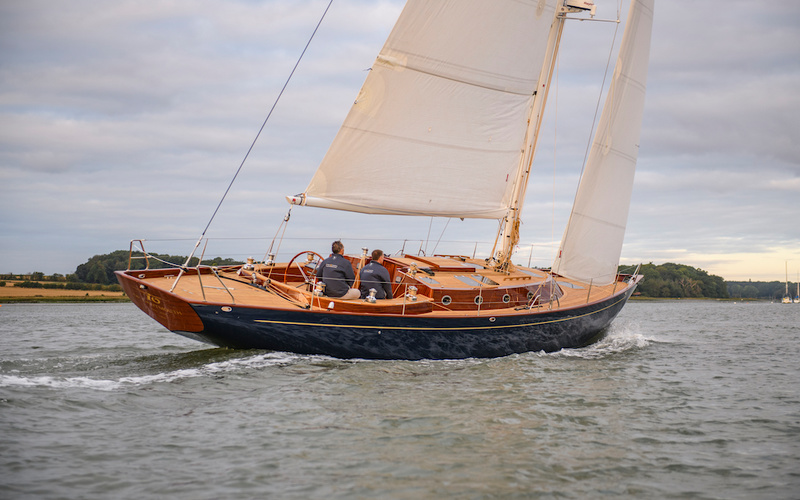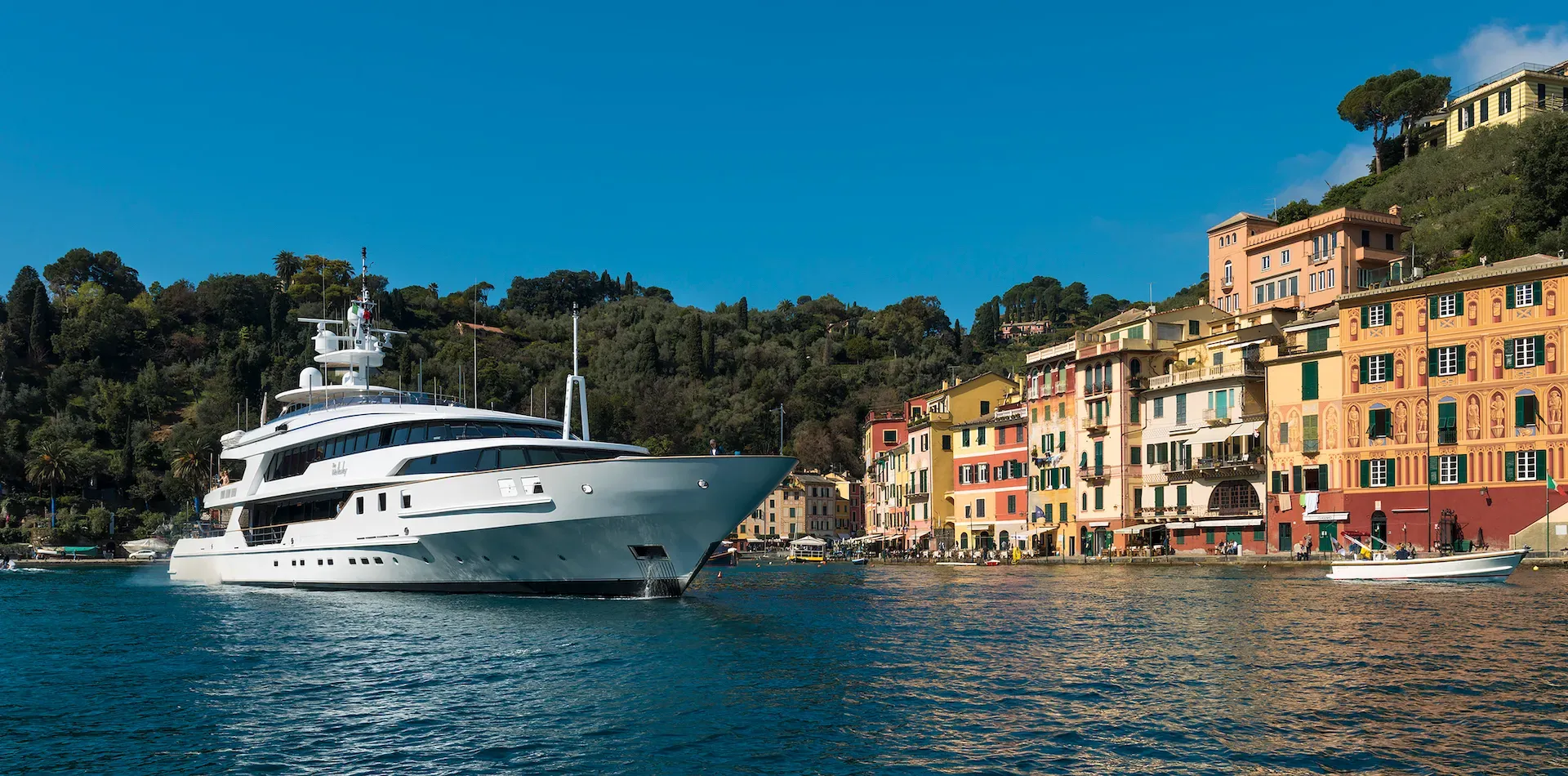One thing you should do is take your watch off. If you start looking at your watch you’re going to do your throne in!” said Sean Langman, owner and skipper of the teeny 91-year-old Maluka. He’d been asked, just days prior to competing in the 50th edition of the Rolex Fastnet Race, how weightier to tideway an ocean race in a wend of this nature.
Langman, who still races Sydney Harbour 18ft Skiffs and has competed in the Rolex Sydney Hobart Race in supermaxis, knows largest than most the importance of waffly mindset when switching from super fast grand prix yachts to a gaff-rigged classic.
The goal is to just alimony her trundling along. Don’t try and sail too high, just alimony getting water under the keel and staying on a making leg,” he says well-nigh racing Maluka, which typically sails at much the same speed upwind as downwind.
As the smallest yacht in the 2023 race at 30ft (9.01m) – and indeed the oldest wend to well-constructed this famous ocean race Maluka boxed well whilom her weight, dealing handsomely under two reefs and a staysail with the first day’s inclement upwind conditions and going on to win IRC Division 4B.
Maluka’s pace is modest at best, and when Langman answered a journalist’s question some years ago on how she’d sail when up versus a super maxi like Wild Oats XI, he answered: “We can go well-nigh five to six knots into the wind, whereas a wend like Wild Oats XI may do 10 or 11 knots. With the wind overdue us we may still do well-nigh five knots, yet they may be doing 25 knots!”
Maluka was built in 1932 for the Clark brothers, wealthy graziers from New South Wales, who used her to trip Australian waters extensively. They enjoyed many adventures, including a successful voyage from Sydney to Hobart (after an older struggle saw them stuff squandered onto rocks), some 10 years surpassing that challenging passage became today’s renowned race.

An emotional attachment
The yacht was conceptualised by ventriloquist yacht designer Cliff Gale, assisted by naval technie AC ‘Archie’ Barber. He was moreover the designer of Rani, the first winner of the Sydney Hobart race in 1945, and ‘the unsung hero of Australian yacht design’, equal to Langman.
Maluka’s distinctive raised deck diamond and robust construction in Tasmanian Huon pine led to a series of similar designs during the 1930s, collectively known as the Ranger class. A number of these still race regularly on Sydney Harbour.
For Langman there is a strong emotional tie to this class, as his father owned a Ranger tabbed Vagrant, built a year without Maluka, which he sold when Langman was 12.
Extraordinary boats: Bluebottle – late Duke of Edinburgh’s boat
After an 18-month restoration to an impressively upper standard, Bluebottle, the Duke of Edinburgh’s boat, is racing then for the. I cried for a month and said I’d get it when one day,” said Langman. At the age of 30 he did just that, and restored her to her former glory. Vagrant still sits on a mooring off Langman’s Noakes Boatyard in Sydney.
I squint at her and say to myself: that’s all I really need. The other 37 boats I’ve had probably were a mistake!”, says Langman with a laugh.
The planking and decking were kept and reused, but to meet the stringent American Bureau of Shipping scantlings that Langman wanted to unzip for racing the Rolex Sydney Hobart Race, he tasked renowned naval technie Andy Dovell with the required engineering.
The cockpit was too large and deep, so the raised deck was extended one frame remoter aft and the cockpit sole was raised, resulting in one unplanned upside,
“It opened up these massive aft bunks – just glorious” says Langman with a big smile. “It’s now got a 9ft long quarter wharfage with a very thick cushion. And I bought new pillows!
“The rule unquestionably pushed the wend into a place to make it much better. She’s a little truck now, she’s very strong.”

Sean Langman (left) and some of his hairdo shortly surpassing this year’s Rolex Fastnet Race start. Photo: Crosbie Lorimer
Langman’s transferral to the traditions of archetype yacht towers is moreover matched by a practical tideway to the use of trendy diamond elements which make the wend increasingly user-friendly and well-appointed to race.
Notable among these additions is the recent replacement of the boat’s engine with a lighter and smaller Nanni 3.8 diesel engine. The mainsail sheet now has a winch pedestal, while the sails and rigging have been redesigned to indulge a increasingly constructive combination of headsail and spinnakers. A babystay allows her to be sailed triple-headed.

The wood-like painted spars disguise a stat fibre mast and an aluminium boom. Note the winches and cleats at the mast for the main halyard and reefs. Photo: Crosbie Lorimer
The Doyles/McDiarmid sail wardrobe is modern in its intent too, with three downwind sails comprised of a Code 0, an asymmetrical and symmetrical spinnaker. Headsails include a yankee, working jib set on the end of the bowsprit, staysail and storm jib.
Although none of these trendy additions seem to impinge in any way on Maluka’s archetype looks, there are some aspects of a wend of this vintage that simply can’t be updated.
“You know you’re sailing when you’ve got to put a woodcut and tackle on the tiller to transpiration direction in heavier airs. not considering it’s got weather helm, but considering there’s no wastefulness in the rudder,” says Langman.
Original charm
With the exception of the necessary modern navigational equipment and instruments, Maluka’s interior retains its original weft too. Traditional lanterns, a brass-cased barometer, hardwood timber cabinets, various race winning plaques, a white-painted, planked timber deckhead and round portholes all lend Maluka’s motel the air of a reassuring and cosy retreat when the conditions get challenging on deck.

RORC worked with the Maluka team to consider if the jib set at the end of the bowsprit could be considered a flying jib (as per traditional working boats). In the end it was deemed a working jib. Photo: Crosbie Lorimer
The only practical way for Maluka to be transported to Europe for the Rolex Fastnet Race was aboard a ship that was delivering two New Zealand Navy vessels stuff sold to the Irish government and delivered to Cork. The result was that Maluka sailed a large part of the Fastnet Race undertow in reverse to reach the Solent from the south tailspin of Ireland a week surpassing the race.
Langman said they drew a number of helpful lessons from that journey, but the most significant learning for the skipper was: “It’s perfect for small draughted boats in this part of the world. There are many trappy rivers and they all have trappy English pubs. I’ve had a unconfined time!”

The eclectic selection of acquisitions in the motel – including mounted postcards from Maluka’s wordage journey up England’s west tailspin – add colour to her traditional interior. Photo: Crosbie Lorimer
A trip to Iceland is moreover on the cards. So it’ll be a while surpassing Maluka is when in Australian waters.
When asked why, having competed in fast yachts for years, he has returned to racing a archetype yacht, Langman turns philosophical for a moment.
“I think a lot of what it’s well-nigh is the inner child. It’s where you started and for me this is where I cut my teeth, sailing these boats with my dad. It’s gold! Pure joy, that’s what it’s about.”

A shot from Maulka’s past. Photo: Australian National Maritime Museum Collection
The history of Maluka
Maluka was built in 1932 for wifeless brothers, William and George Clark, who wanted to enjoy their retirement from farming. Without first using her to potter and fish round Sydney Harbour they started to plan increasingly venturesome cruises. One early photo shows her in an idyllic wharf up the Hawkesbury River north of Sydney.
In 1933, they spent five months sailing to North Queensland, encountering heavy weather that proved Maluka’s seaworthiness and gave them conviction to go plane further. So in 1934 they sailed to the remote Lord Howe island in the Tasman Sea.
Their third voyage didn’t go well. While sailing south of Eden without Christmas in 1935, they encountered a southerly gale. The three hairdo hove to for days, sooner lashing the tiller so they could go unelevated and rest.
What they didn’t realise is that the strong current had been sweeping them south withal the tailspin of Victoria and in the early hours they grounded off Cape Conran.









